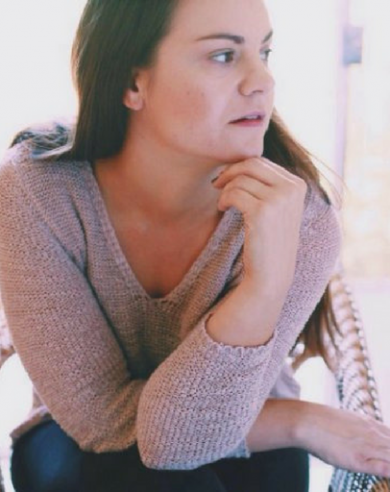Tanika Roy: The Woman Behind #WhatIFoughtFor
Tanika Roy is a Los Angeles-based photographer and artist and a Marine Corps veteran. Her most recent work features veterans alongside refugees in a photo essay entitled #WhatIFoughtFor, created with Veterans for American Ideals, a project of Human Rights First. The project launched on Veterans Day, November 11th, 2017.
Ambitious, aspirational, and emotionally stirring, the photo essay and accompanying stories capture the essence of American ideals. They also shine a light on the continuing challenges facing refugees in the midst of an historic crisis. Despite over 65 million people displaced worldwide, last month, the Trump Administration set a historically low refugee admissions goal for fiscal year 2018. At the same time, anti-Muslim rhetoric has become all too common in our national discourse.
Tanika hopes her project will help break down stereotypes about refugees and veterans. “I want you to not only see who they are, but be curious of their story,” she says.
Her own story also breaks the mold. After her high school graduation in 2003, Tanika enlisted in the U.S. Marine Corps, serving as an Avionics Technician on EA-6B Prowlers, a Marine aircraft. “Basically, I troubleshot and fixed broken wires on airplanes.”
She says her service shaped the person she is today. “I don't regret my decision to serve one bit,” she says. “It gave me a sense of patriotism, personal responsibility, and drive that I hadn't known until then.”
Military service enabled Tanika to see the world. Deployments to Japan and Iraq catalyzed her journey from Marine to artist and provided “extraordinary inspiration.” In Japan, “there is a sense of tranquility in nature that is quite remarkable and I plan to explore this in future work,” Tanika says. “I’ve also created both in motion and photographic stills that were reflective of my time in Iraq—the full moons and night sky are just beautiful.”
Tanika had wanted to try photography in high school but couldn’t afford to buy a camera. Once she was in Iraq, she had saved enough and spent most of the deployment fixated on which camera to get stateside. As soon as she arrived home, Tanika purchased a Canon Rebel XT.
After a few years working as a civilian contractor, Tanika decided to pursue a photography degree, graduating three years later. She is now a professional photographer and focuses her work on the humanitarian and environmental realms.
Moved by the refugee crisis as well as her time in service, Tanika set out to capture the relationship between veterans and refugees, some of whom served as interpreters and translators for U.S. forces in Iraq and Afghanistan.
When choosing the setting, Tanika gravitated to the monuments of the National Mall—symbols of freedom, equality and justice—to evoke the struggle both refugees and veterans have faced in fighting for freedom. Each pair is placed against a white backdrop; the effect is poignant and intentional. “It amplifies each veteran and refugee and their identity in a vulnerable way,” says the artist.
Upon witnessing the relationship between each veteran and refugee and learning their stories, Tanika hopes viewers will “feel a sense of camaraderie or a by-proxy nostalgia.”
Another layer of the work evokes the melting pot of American identity: who is the veteran and who is the refugee? “I want the viewer to be confounded by the definitive lack of clarity,” Tanika explains. “With such a diverse group serving our nation, how can one tell?”
Each striking photo tells a different story of friendship, sacrifice, brotherhood, faith, and family. Throughout, the artist’s patriotism is palpable. At a time when our nation is so divided, #WhatIFoughtFor reminds us of our historically bipartisan legacy supporting refugee resettlement. Tanika’s project provokes the question, “What do we stand for?”
When asked what statement she hopes to make by launching the project on Veterans Day, she does not hesitate. “Veterans have a powerful voice,” Tanika explains. “On November 11th especially, the nation is listening. We can and should use our voice to be unifiers on polarizing issues, especially on matters related to American ideals.”
After all, she says, “That is what I fought for.”


